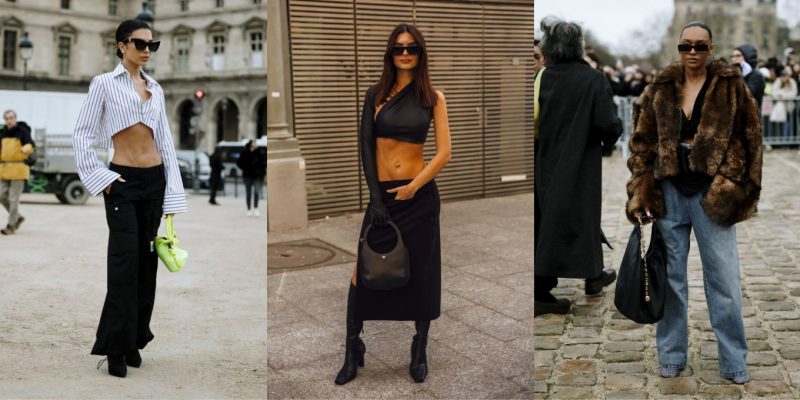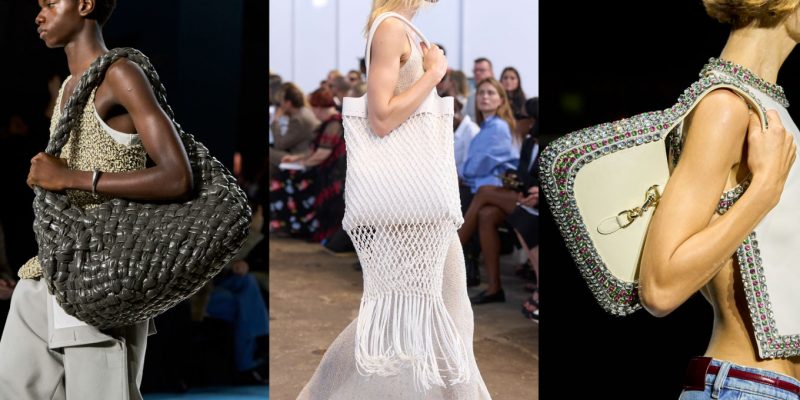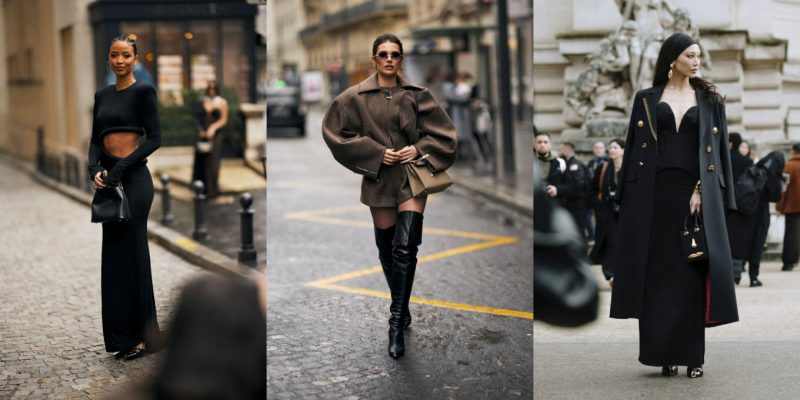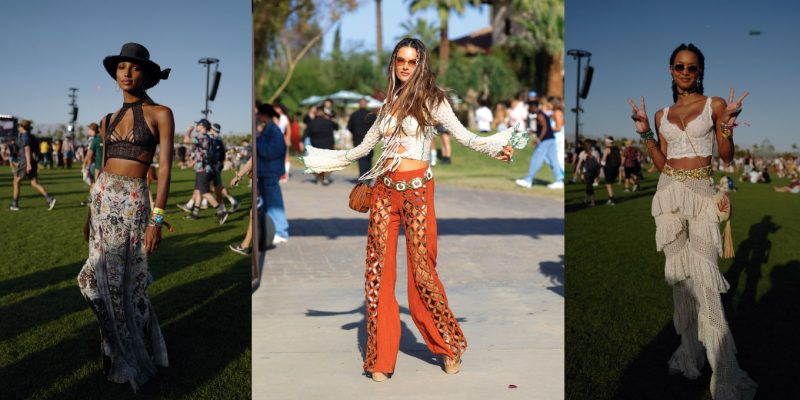Fashion
Designer profile: Jean Paul Gaultier
Jean Paul Gaultier celebrates 35 years of fashion with his first international retrospective at the Montreal Museum of Fine Arts
by : Geneviève St-Germain- May 4th, 2011
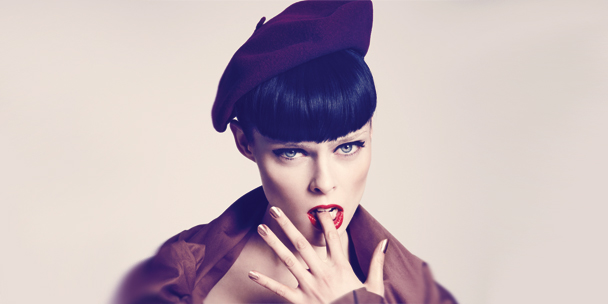
Jean Paul Gaultier has charmed and challenged the fashion world for the last 35 years. Affectionately known as the industry’s
enfant terrible, he has made a career out of breaking rules, challenging gender boundaries and redefining
beauty. As a result, his designs—the Breton striped sweater, the men’s skirt and Madonna’s cone bra—are now iconic. This June, the Montreal Museum of Fine Arts (MMFA) presents
The Fashion World of Jean Paul Gaultier: From the Sidewalk to the Catwalk, the first international retrospective of his work. The exhibit—curated by Thierry-Maxime Loriot under the direction of Nathalie Bondil, director and chief curator of the MMFA—will be designed by French agency Projectiles and include a selection of ready-to-wear and
haute-couture outfits, sketches, photography and film clips, as well as audiovisual animations of 30 mannequins created by Quebec director Denis Marleau. ELLE met up with Gaultier while he was in Montreal to check out the upcoming exhibition.
How would you describe the show?
“It will be arranged according to different themes I’ve explored in my work, rather than a chronological retrospective, and include everything from my play with feminine and masculine to multiculturalism to my work with film directors like [Pedro] Almodóvar, [Marc] Caro and [Jean-Pierre] Jeunet. There is also work based on my collaborations with choreographers like Régine Chopinot and Maurice Béjart, as well as photographers like [Jean-Baptiste] Mondino. And, of course, my work with artists like Madonna.”
Does it seem strange to have a retrospective of your work when you’re still in the middle of your career?
“To be honest, I was sort of against it at first. I had the childish idea that we only deserve this kind of recognition after we die. But then I saw what the museum had done for
Yves Saint Laurent [
Yves Saint Laurent, MMFA, 2008]. Ooh la la, it was magnificent! I was flattered that they thought of me. I’m not worthy of it. That they should propose this to me…what could I say? What convinced me was that it’s a way to showcase my work differently. It’s an exciting new adventure.”
Are you happy that your first retrospective is taking place in Montreal?
“I felt that, in a way, there was more support here—less rigidity, an openness. At the start of my career, my first editorials were not with the French but with the English, the Japanese, the Québécois. I don’t know…I feel more at home here. The Québécois have a less stuffy side; they’re more fun. I love Paris; it’s sublime, and it’s where I have built my business, my craft, but it doesn’t have the same friendly atmosphere that you find here. All the cynicism…it’s exhausting and very negative.”

Who is your idealized Parisian woman?
“My Parisians are attractive women who come from elsewhere. Farida Khelfa, for example, is an Algerian immigrant, actress and former model who has an incredible allure. She represents the new Parisian.”
What do you most admire about women, and how does this influence the models you use in your shows?
“What I like, what I’ve seen and what I find in women I’ve known is that they are stronger than men. They are the ones who make the big decisions, who confront life. They’re courageous and they’re much more intelligent. I have a lot more admiration for women than I do for men. As for my choice of models, it’s quite eclectic: I have round and voluptuous, tall and thin, from dark-haired to platinum blond to incandescent red. It’s a question of attitude. Above all, they are personalities.”
How do you avoid promoting a standardization of beauty?
“I have always presented my collections with the idea that there isn’t just one form of beauty. Has this idea been accepted by society? I don’t know. Maybe people have processed the idea subconsciously. But I think that some people took it as a provocation. As if to say ‘Ah, he wants to shock us!’ when in reality that wasn’t it at all. I presented one collection with black models and only one white one. But, mainly, I’ve shown all kinds of people. My choice has always been based on the person’s personality and not on body type. That’s why I brought in Beth Ditto for my spring/summer 2010 collections. She’s openly gay and fabulous. She’s a wonderful example of someone who is happy and living her life well. When you see people like her, you can’t help but be inspired.”
How has the fashion business changed in the last 35 years?
“It has changed a lot. When I started out, there were no luxury groups [LVMH, for example, which owns Louis Vuitton, Givenchy, Céline, Kenzo, Marc Jacobs, Fendi and Donna Karan, among others]. The press didn’t dictate to the designers. Today, everything is reversed. It used to be only the Italians who worked like that. This politically correct attitude in fashion should be given a big kick in the pants. Everything is so stereotyped—what we should or shouldn’t do. Even in fashion, things are tested before the design process is finalized to see if they will appeal to the greatest number of consumers. It’s the opposite of a creative process. It’s incredible…I have never worked like that and I hate it. I have no desire to make concessions. What a horrible word! It’s something I don’t understand, perhaps because I already edit myself. And I know that you have to find a balance in order to reach people. After all, that’s the final goal. What interests me is creating. As soon as I stop creating, it doesn’t interest me.”
What do you think of fashion shows being shown immediately on the Internet?
“It has made fashion into a spectacle. It’s not negative in and of itself. But now people look at fashion; they don’twear it—except those who work in it or copy it. It’s a kind of closed microcosm. Movie stars, for example, who have the means to buy it: Not only do we give them dresses but we pay them to wear them. People used to come to shows to buy. Now, they’re interested in the models and the music. There’s no analysis of which pieces they want to wear. It moves quickly; we can copy things instantly. The image is everywhere, so it’s cheapened. But, ultimately, all this makes the live performance even more important. It’s more unique, more luxurious. The human presence is the rare commodity.”

Is it still possible to be inspired by what’s happening on the street?
“In a way, yes—but it depends on which street! During the punk movement in the ’80s, the streets of London were supercreative and fantastic. I had some extraordinary moments there. The English had an utter extravagance that gave me the courage to do what I wanted to do. Today, the street has changed. It has become much more mainstream.”
How do you maintain your signature without going out of style?
“I’m a fashion dinosaur! Let’s just say that time informs your style. I’ve always tried to say something through fashion. The idea isn’t just to intellectualize it; it also has to be emotional and sensual. You either like it or you don’t; you fall in love with it or you don’t. But I’ve tried to show gender equality as well: to work at the boundaries, the beautiful and the ugly. This was due, in part, to my rebellion against French fashion, with its precise codes in matters of good taste. All of that made me react, think, test the limits. That’s why I love trompes l’oeils. You think you see something, but you discover something else. The boundaries don’t exist anymore; that’s what’s great about it.”
What role will haute couture play in your future?
“There is always a place for something unique. It allows me to research, concentrate and be in a very couture rhythm in the atelier. The fittings—looking at the tiniest detail and making it better—I like this process.”
You’ve never pushed the idea of having an It bag or musthave accessories. Why is that?
“Everyone is doing just that. Even at Yves Saint Laurent, where they will show two lonely pieces of clothing in the window and only shoes and bags! You would think you were in an accessories shop. I love accessories, but as a finishing touch, like a hat, or a belt that you wear over a piece, or on your hand. For me, an accessory isn’t going to completely change the outfit. What I’m interested in is the entire outfit, the clothing.”
How do you hope people respond to the exhibit?
“I hope we have created a universe that seduces and excites everybody. Ultimately, I want it to show what I’ve always said, which is that there is no one kind of beauty. Open your eyes! There is beauty everywhere. You can see it if you look for it and if you want to find it.”
The Fashion World of Jean Paul Gaultier: From the Sidewalk to the Catwalk runs from June 17 to October 2 at the Montreal Museum of Fine Arts (mmfa.qc.ca).
Read more
Designer profile: Georgina Chapman
Who is Tom Ford?
Couture fashion week Spring/Summer 2011
Newsletter
Join our mailing list for the latest and biggest in fashion trends, beauty, culture and celebrity.
Read Next

Fashion
Are Fashion Brands Getting Greener?
While the fashion industry is making a lot of noise about being more sustainable, a closer look shows that its earth-friendly commitments are often more illusion than reality.
by : Marouchka Franjulien- Apr 19th, 2024

Beauty
What Beauty Packaging Is Actually Sustainable?
We sought out leaders in the field to help us get to the bottom of the blue bin once and for all.
by : Victoria Christie- Apr 19th, 2024

Culture
This Maple Whipped Tofu Toast Is Unreal
Light, fluffy with a touch of zest, this maple syrup-infused toast is a slice of heaven.
by : Margaux Verdier- Apr 9th, 2024

